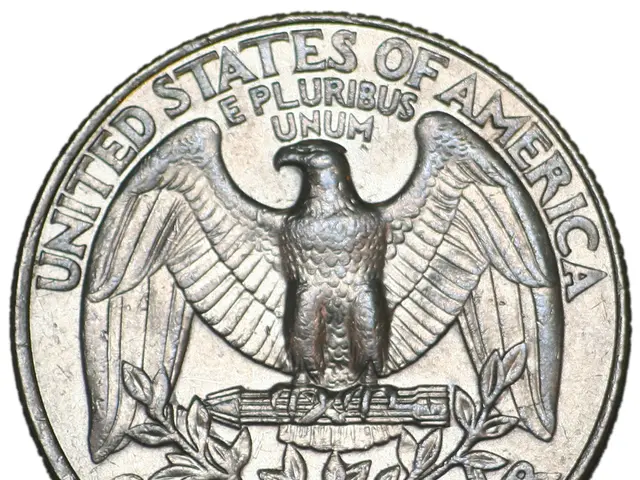The Energy Star Program: A Decades-Long Quest for Energy Efficiency
Federal Government's Decision to Slash EPA Budget Leads to Energy Star's Termination
Stepping into the arena of energy conservation, we delve into the story of Energy Star, the iconic government program that's helped consumers make informed decisions about energy-efficient appliances for nearly three decades. Initiated under the George H.W. Bush Administration, this initiative was birthed in 1992 as a voluntary, market-driven solution to combat energy waste[1][2][3]. Aiming to lead consumers towards more efficient products, the program leaves the final decision in each consumer's hand, making it an appealing choice for the eco-conscious and cost-savvy alike.
Origins: A Voluntary Approach to Energy Efficiency
Energy Star began its journey in 1992, spearheaded by the U.S. Environmental Protection Agency (EPA) and the Department of Energy, under the administration of President George H.W. Bush[1][2][3]. The program was born out of a desire to help consumers choose products that consumed less energy while still maintaining performance standards. Adopting a voluntary approach, the program provided consumers with the freedom to make their own decisions about energy efficiency without mandates.
A Recognition Program, Not a Standard Setter
It's important to clarify that Energy Star is a recognition program, not a regulatory body setting energy efficiency standards. Instead, it acknowledges the most energy-efficient products on the market, giving consumers the power to choose between the most efficient options and traditional models[1]. The primary goal of Energy Star is to nudge consumers towards more sustainable choices, fostering a shift towards a more energy-efficient future.
Unyielding Impact: Cost Savings and Market Influence
The results of the Energy Star program have been nothing short of impressive. Evaluations have shown that Energy Star has managed to save consumers approximately $500 billion in energy bills since its inception[2]. By identifying the best products within over 75 different product categories, the program has helped these energy-efficient products enter the market and gain market share[3]. Even today, manufacturers often have to revise and strengthen their specifications to maintain recognition as top performers, demonstrating the program's success in pushing the market towards energy efficiency.
A Question of Cost: Government Spending and Savings
As the Trump administration moves to downsize the Environmental Protection Agency, Energy Star has found itself on the chopping block, along with other climate-related initiatives[5]. Critics argue that the program contributes to government waste by costing around $30 million annually to maintain[1]. However, the program more than pays for itself, generating around $40 billion a year in consumer energy savings[1]. This stark contrast illustrates that Energy Star is far from a drain on government resources, but rather a valuable asset that reaps substantial benefits for consumers.
The Manufacturers' Perspective: A Driver of Innovation
Some argue that manufacturers already have an incentive to produce the best and most efficient products that consumers want to buy[1]. However, Energy Star offers a unique advantage by serving as a trusted, independent third party. With consumers often questioning manufacturers' claims, the government plays a crucial role in recognizing the most efficient products in a way that consumers can trust[1]. This recognition helps encourage consumers to choose energy-efficient products, ultimately driving manufacturers to innovate and improve the efficiency of their offerings.
A Widespread Support vs. Controversy
Over the years, the Energy Star program has garnered widespread support, having originated under the first President Bush, continued under the second President Bush, and found support among various Democratic presidents[1]. Moreover, many manufacturers, building owners, and other key players within the industry have embraced the program as essential to their operations, finding it instrumental in improving their products and securing recognition for their efforts[1][4]. However, recent attempts to dismantle the program under the Trump administration mark a significant shift in its fortunes.
Feeling the heat, the Energy Star program stands as a testament to the power of voluntary, market-driven solutions in promoting energy efficiency[2][4]. As the world grapples with the impacts of climate change and ever-increasing energy demand, innovative programs like Energy Star will play a crucial role in shaping a more sustainable, efficient, and secure energy future.
- The Energy Star Program, initially launched in 1992 under the George H.W. Bush Administration, is a government initiative aiming to combat climate change through energy efficiency.
- Despite being a voluntary program, the Energy Star Program has significantly influenced the industry by recognizing the most energy-efficient products across 75 different categories.
- Supporters argue that the program generates substantial savings for consumers, having saved them approximately $500 billion in energy bills since its inception.
- The program has received support from various administrations, but its future is uncertain under the Trump administration, as it faces potential budget cuts due to political debates over its economic and environmental impact.
- Manufacuturers view the Energy Star Program as a valuable asset, as it offers an independent third-party validation that motivates consumers to choose energy-efficient products, driving innovation within the industry.
- In the realm of environmental science, climate-change policy, and general news, the Energy Star Program's role in balancing economic concerns with environmental sustainability continues to spark discussions and debates on its overall value and impact on the environment and energy industry.







